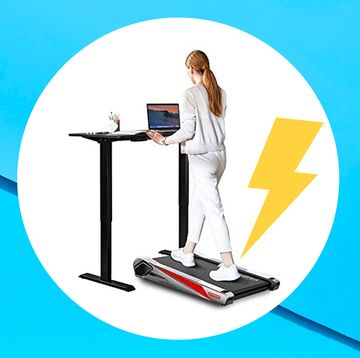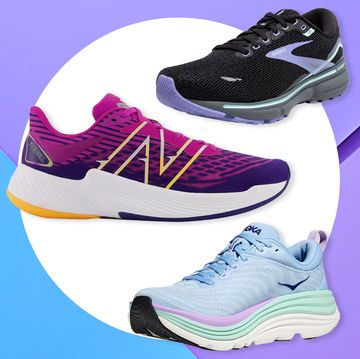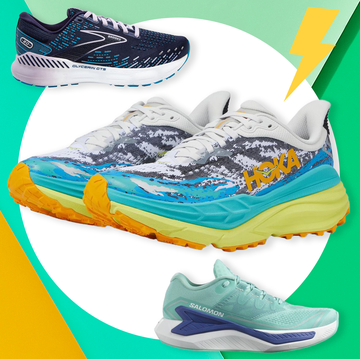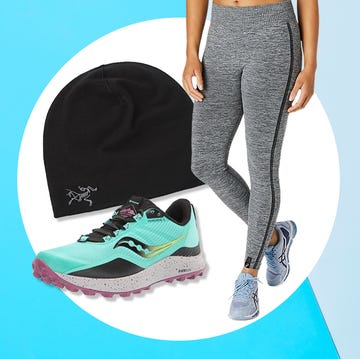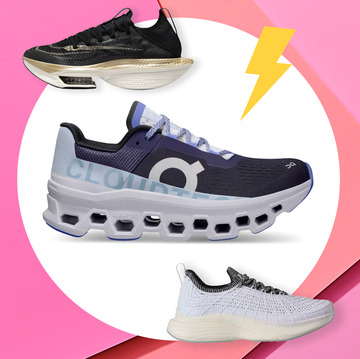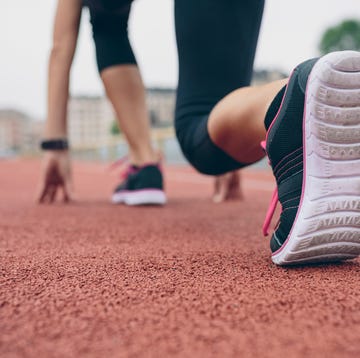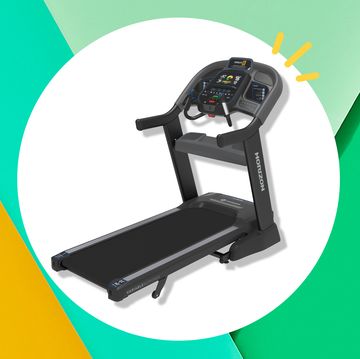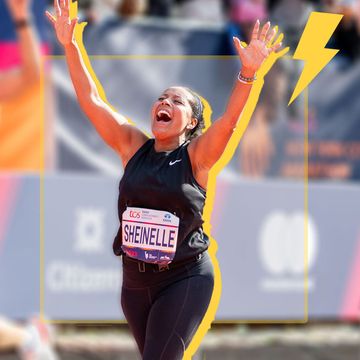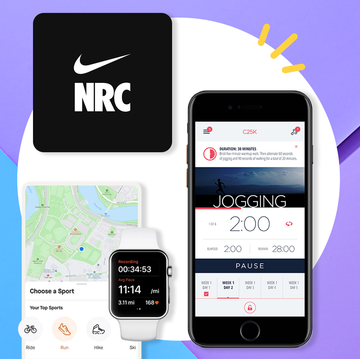Few women have the luxury of lacing up whenever they like. Most have to sweat it out before work (between 5 a.m. and 8 a.m.) or after (between 5 p.m. and 8 p.m.), according to the American Time Use Survey. But that's not necessarily a bad thing: Studies show people who exercise before breakfast burn fat more efficiently throughout the day, while happy-hour exercisers benefit from peak levels of flexibility, endurance, and strength.
But if you're dedicated to an outdoor fitness routine, working out before sunrise or after sunset does come with its share of safety concerns—low visibility, rush-hour traffic, and empty a.m. streets can increase your risk for injury or worse. The fix? Apply these five see-and-be-seen strategies.
Be Reflective
If you want to be visible during the dim hours, wear fluorescent colors. They're effective because they reemit light at longer wavelengths, making the material brighter than the brain expects, says Franklin Smith, technical service manager and engineer for 3M. And because our brains are designed to identify human movement, having something reflective on various points of motion (such as your head, wrists, ankles, and elbows) will help a driver see you from far away. Don't forget your sides: If you cross an intersection with only front and rear reflectivity, you could practically disappear.
Buddy Up
More than half of exercisers go it alone, according to the American Time Use Survey. But being in a group makes you more visible to approaching cars and less tempting to a mugger or attacker. Plus, extra eyes can help spot potholes, roots, or other obstacles. Make a date with a friend or find a nighttime running group through the Road Runners Club of America (rrca.org). If you do head out alone, stick close to home, follow familiar, well-lit routes, and avoid unpopulated streets and paths.
Skip the Earbuds
Music has been shown to improve workout efficiency, effort, and endurance, but it also distracts you. In fact, researchers at the University of Alabama at Birmingham found that music was the most dangerous distraction for pedestrians. In the study, iPod users had a 33 percent chance of being hit by a car at a crosswalk, compared with 25 percent of texters and 12 percent of cell-phone talkers.
"You expect drivers to pay attention, so you should do the same," says Jean Knaack, executive director of the Road Runners Club of America. If you can't go a mile without Gaga, use one earbud and keep the volume low. Riding on two wheels? The Bone Collection Bone Bike Horn iPhone case ($30, amazon.com) attaches to your handlebar and amplifies your playlist so you can ride earbud-free.
Pack Wisely
Bringing a charged cell phone seems like a no-brainer, but you should also always carry your identification and an emergency contact number, says Knaack. Add an "in case of emergency" number to your phone contacts; label it ICE and first responders will know who to call. You can also get a Nathan VITAband ID band ($20, plus a $20 annual subscription, citysports.com), which connects paramedics and hospitals to a secure online profile where they can access all of your must-know info. It can also link to an optional prepaid debit account—handy if you find yourself in need of cash.
Practice Precaution
Low light, rush hour, and a roadside workout can be a recipe for trouble. Case in point: Nearly two-thirds of pedestrian accidents happen at night, and nearly a third of fatal cycling accidents occur between 5 p.m. and 9 p.m. "We all know that drivers are often distracted," says Knaack. "You have to act defensively, because you're not always on a driver's radar." When you can, stay on sidewalks and streets with bike lanes or wide shoulders. Be most careful at crosswalks and intersections, and pay extra attention to cars as they turn. Drivers tend to look toward oncoming traffic and can forget to check the other direction.


